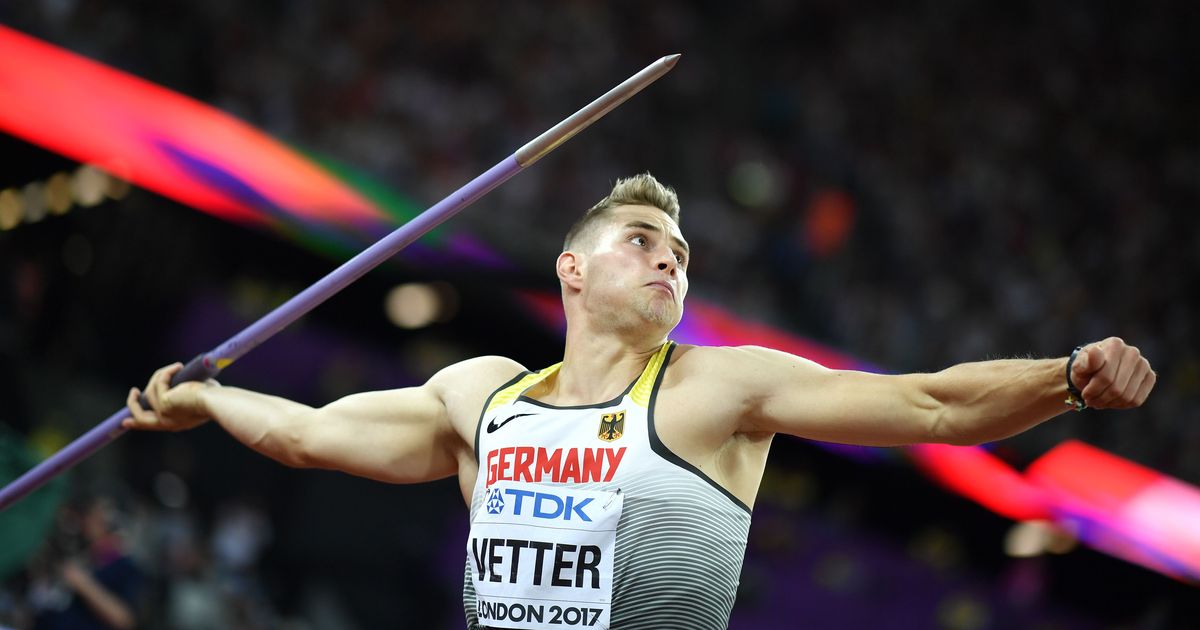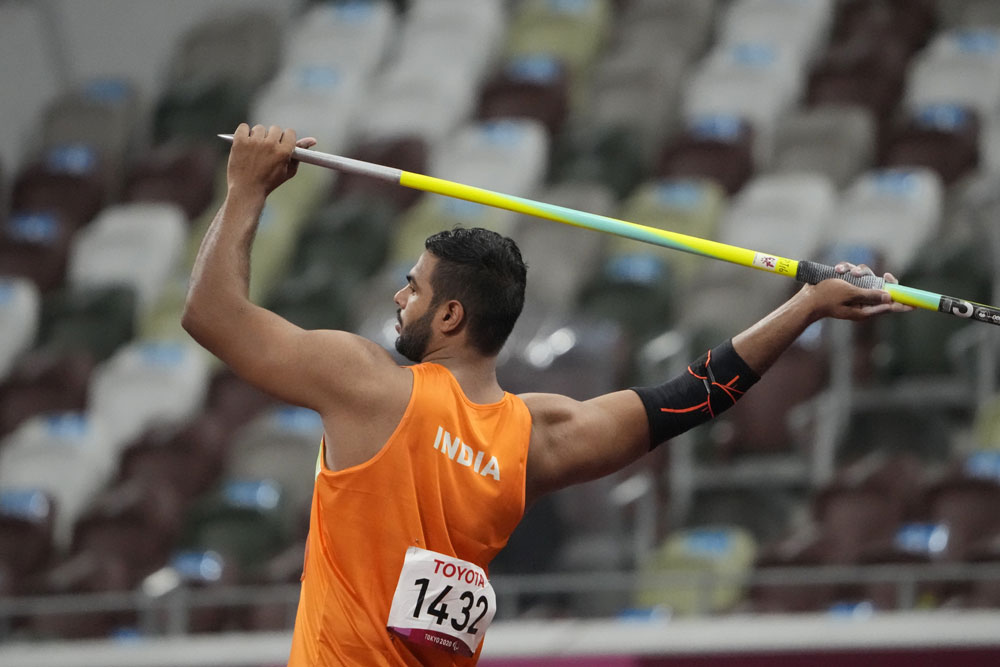Current World Record Holder and Performance: Javelin Throw World Record

The current world record holder in the men’s javelin throw is Jan Železný from the Czech Republic. His remarkable throw of 98.48 meters (323 feet 1 inch), achieved on May 25, 1996, in Jena, Germany, remains the gold standard for the event. Železný’s dominance in the sport, coupled with this exceptional throw, cemented his status as one of the greatest javelin throwers of all time.
Jan Železný’s Biography and Training Regimen
Jan Železný, born on May 16, 1966, in Mladá Boleslav, Czech Republic, began his javelin throwing journey at a young age. His natural talent and dedication to the sport propelled him to the top of the world rankings. Železný’s training regimen was rigorous and comprehensive, focusing on developing strength, speed, and technique.
- Strength Training: Železný’s strength training routine involved exercises like squats, deadlifts, and bench presses to build a strong foundation for powerful throws.
- Speed Training: He incorporated sprinting and plyometrics into his training to enhance his acceleration and explosiveness.
- Technical Refinement: Under the guidance of his coach, Jan Železný meticulously honed his throwing technique, focusing on maximizing his body’s leverage and generating optimal momentum.
Analysis of the Record-Breaking Throw
Železný’s record-breaking throw is a testament to his exceptional athleticism and technical prowess. His technique was characterized by a smooth and fluid motion, allowing him to transfer maximum energy to the javelin.
- Run-up: Železný’s run-up was a crucial element of his throw. He built up speed gradually, maintaining a balanced and controlled stride pattern.
- Plant: At the plant, Železný’s powerful leg drive propelled him forward, creating a strong base for the throw.
- Javelin Release: The release of the javelin was the culmination of all the energy and technique Železný had generated. He achieved a near-perfect release angle and speed, maximizing the javelin’s trajectory and distance.
Comparison with Previous Records
Železný’s record-breaking throw surpassed the previous world record held by Uwe Hohn of East Germany, who threw 94.58 meters (309 feet 10 inches) in 1984. This achievement marked a significant leap forward in javelin throwing, demonstrating the ongoing progress and evolution of the sport.
The current world record has stood for over two decades, highlighting its exceptional nature and the immense challenge for future athletes to surpass it. While several javelin throwers have come close to Železný’s mark, the record remains unchallenged.
The potential for future improvement is always present, as advancements in training techniques, biomechanics, and equipment can contribute to further distance gains. However, surpassing Železný’s record will require a combination of exceptional talent, unwavering dedication, and a perfect execution of the throw.
Factors Influencing Javelin Throw Performance

The javelin throw is a complex event that requires a combination of strength, speed, and technique. Athletes must master the intricate steps of the throw, optimize their physical capabilities, and understand the aerodynamic principles that govern the flight of the javelin. The performance of a javelin thrower is influenced by a multitude of factors, which can be categorized into technical, physical, and technological aspects.
Technical Aspects
The technical aspects of the javelin throw are crucial for achieving maximum distance. A proper technique ensures that the athlete can generate the most force and momentum while minimizing energy loss. Here are the key technical elements:
- Run-up: The run-up is the initial phase of the throw, where the athlete accelerates to gain momentum. The run-up should be smooth and controlled, with a gradual increase in speed.
- Plant: The plant is the moment when the athlete’s lead foot touches the ground before the throw. This is a crucial point where the athlete transfers momentum from the run-up to the throwing motion.
- Crossover Step: The crossover step is a critical step in the javelin throw that helps the athlete shift their weight and momentum from the run-up to the throwing motion.
- Javelin Grip: The javelin grip significantly impacts the throw’s accuracy and distance. The athlete should grip the javelin firmly, ensuring a balanced and controlled release.
- Throw: The throw is the final stage of the javelin throw, where the athlete releases the javelin with maximum force and accuracy. The throw should be a smooth and powerful motion, with the javelin released at an optimal angle for maximum distance.
Physical Aspects
Physical attributes play a vital role in javelin throw performance. Strength, speed, and flexibility are essential for generating power and controlling the javelin throughout the throw.
- Strength: Strength is crucial for generating power during the throw. Athletes need to develop strength in their legs, core, and upper body to effectively propel the javelin.
- Speed: Speed is essential for generating momentum during the run-up. Athletes need to be able to accelerate quickly and maintain their speed throughout the throw.
- Flexibility: Flexibility is important for maintaining a balanced and controlled throwing motion. Athletes need to be flexible in their shoulders, hips, and back to ensure a smooth and efficient throw.
Aerodynamics, Javelin throw world record
Aerodynamics plays a crucial role in the flight of the javelin. The shape and design of the javelin, along with the angle at which it is released, influence its trajectory and distance.
- Javelin Design: The design of the javelin influences its flight characteristics. The javelin’s shape, weight distribution, and center of gravity affect its stability and aerodynamic efficiency.
- Release Angle: The angle at which the javelin is released significantly affects its flight path and distance. The optimal release angle for maximum distance is typically between 35 and 45 degrees.
Technology
Technology has significantly impacted javelin throw performance. Innovations in javelin design and training aids have helped athletes improve their technique and achieve greater distances.
- Javelin Design: Advancements in materials and manufacturing techniques have led to the development of javelins with improved aerodynamic properties and stability.
- Training Aids: Training aids, such as javelin simulators and video analysis software, have helped athletes improve their technique and identify areas for improvement.
The javelin throw world record, currently held by Jan Železný, stands as a testament to human athleticism. As the world anticipates the Olympics 2024 javelin throw , the question arises: will we witness a new world record being set in Paris?
The answer remains to be seen, but one thing is certain: the pursuit of excellence in this demanding discipline will continue to inspire generations of athletes.
The javelin throw world record stands as a testament to the incredible athleticism and precision required in this demanding sport. The history of the men’s javelin throw is filled with remarkable feats of strength and skill, pushing the boundaries of human potential with each new record-breaking throw.
